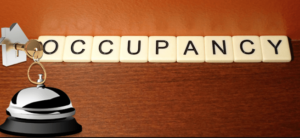 Occupancy rate is the ratio of rented or used space for the total amount of available space. The metric is expressed as a percentage and is often used when determining how much available space is actually being utilized in a given period.
Occupancy rate is the ratio of rented or used space for the total amount of available space. The metric is expressed as a percentage and is often used when determining how much available space is actually being utilized in a given period.
How to calculate Occupancy Rate?
Occupancy rate is calculated by dividing the number of units rented out by the total units available. The sum of this equation is expressed with a decimal point, in which can be converted to a percentage by multiplying the sum by 100.
The formula for occupancy rate is:
Occupancy Rate = Units Rented Out / Total Units
Why is Occupancy Rate important for hotels?
Analysts use occupancy rates when discussing senior housing, hospitals, bed-and-breakfasts, hotels and rental units, among other categories. In a call center, occupancy rate refers to the amount of time agents spend on calls compared to their total working hours.
From a real estate investor’s standpoint, occupancy rates are predictors of cash flow, and they provide a method by which the financial attractiveness and performance of various parcels of real estate can be compared.
Clearly, investors like to see high occupancy rates. Low occupancy rates can indicate that a piece of real estate has a problem.
Occupancy rate is often considered to be one of the top three most useful metrics for hotel owners carrying out a revenue management strategy, alongside the average daily rate and revenue per available room.
With that being said, there are some limitations to it as a KPI, so it is important to understand how to read it effectively.
Contact our THLA team with any questions.


2 comments on “What is Occupancy Rate?”